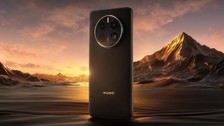Apple is embedding QR codes in every iPhone. But why?
Tech giant Apple takes a surprising step for its renowned iPhone models.

Apple has taken a noteworthy step in enhancing its iPhone screen production quality by engraving QR codes onto each screen. This innovative measure allows Apple to maintain a close watch on the quality of screens sourced from suppliers, specifically Lens Technology and Biel Crystal. This QR code initiative has remarkably reduced material wastage from 30% to a mere 10%.
Each iPhone screen now possesses two distinct barcodes: one situated on the inner edge of the bezel and a smaller 0.2mm one located elsewhere. These barcodes serve a dual purpose. While the smaller code focuses on inspecting screens reported as faulty, the larger one identifies screens that are genuinely defective, pinpointing the supplier and even specific production batches, if necessary. This system not only conserves resources but also ensures that Apple's suppliers remain accountable for any discrepancies in screen quality.
Apple is embedding QR codes in every iPhone. But why?
Originally, Apple encountered hurdles in attaching these QR codes. The codes weakened the displays, leading to them cracking during drop tests. Fortunately, through the development of innovative scanning methods and the use of microscopic lenses, these challenges were overcome. The refined process ensures the glass isn't etched too deeply, preventing potential vulnerabilities.
Despite this advancement in quality control, Apple's iPhone 15 series has been plagued with other issues, such as overheating and complications with USB-C cables. The devices, equipped with 3nm chipsets, and pioneering with the Apple A17 Pro chip, are drawing attention. Analyst Ming-Chi Kuo has speculated a diminishing demand for these chipsets in the coming year, which could result in Apple decreasing orders for 3nm chips.
 Huawei made a grand gesture: Gave this phone as a gift to all employees!Mobile
Huawei made a grand gesture: Gave this phone as a gift to all employees!Mobile



